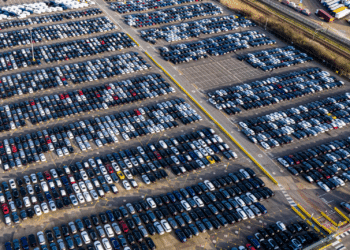Used-Car Values Hold Up Despite Forecasted Depreciation

Analysts have predicted high depreciation rates in the used-car market for more than a year now, but those forecasts have yet to come to fruition.
In July, Manheim registered its highest level ever in its used-vehicle value index — reporting values at auction are up 5.1% year over year. Black Book’s used-vehicle index uses a different methodology but similarly has retention values up 0.7% year over year in July. RVI’s used-vehicle price index rose 2.5% year over year across all vehicle age segments in June.
“Initially, some of these economists would say ‘It’s not true, there’s going to be so much demand for new cars’ — that was a load of crap,” Moshe Orenbuch, managing director at Credit Suisse, told Auto Finance News. “New-car sales are down, used-car sales are up, and used-car values are stronger than we thought.”
Of course, values tend to rise in the summer during one of the year’s peak sales periods, but the year over year numbers don’t lie. For example, Black Book initially predicted a depreciation rate of 17.6% through 2017, but the final rate ended up 4 percentage points better at 13.2% depreciation. To date, 2018 is on track to perform on par or better than last year.
The damage done by Hurricane Harvey ended up being the catalyst for a boon in used-car values last year, and in 2018 tax cuts have been that boost to the industry along with the fear that tariffs will cause a rise in prices.
“The strange summer price appreciation in used cars is partly a function of a strong economy at its peak, with mounting affordability challenges for the consumer that favor growth in used-vehicle sales at the expense of new,” RVI wrote in its monthly report. “The catalyst for even stronger price movement this summer is the fear of import tariffs leading to higher prices in the future. Higher prices and the related declining level of supply create a psychological feedback loop for consumers, encouraging buying now with the expectation that prices may be higher later.”
Orenbuch admits there are still headwinds such as mounting off-lease vehicle volumes that are almost sure to depress used-car values through the end of the year, but so far the industry has handled these challenges well.
“You have this persistent extra 300,000 coming off lease so you have to absorb it, but [the industry] is starting out at a much better spot [than it was last year],” he said. “We in the investment community overstated the risk of that used-car glut.”















